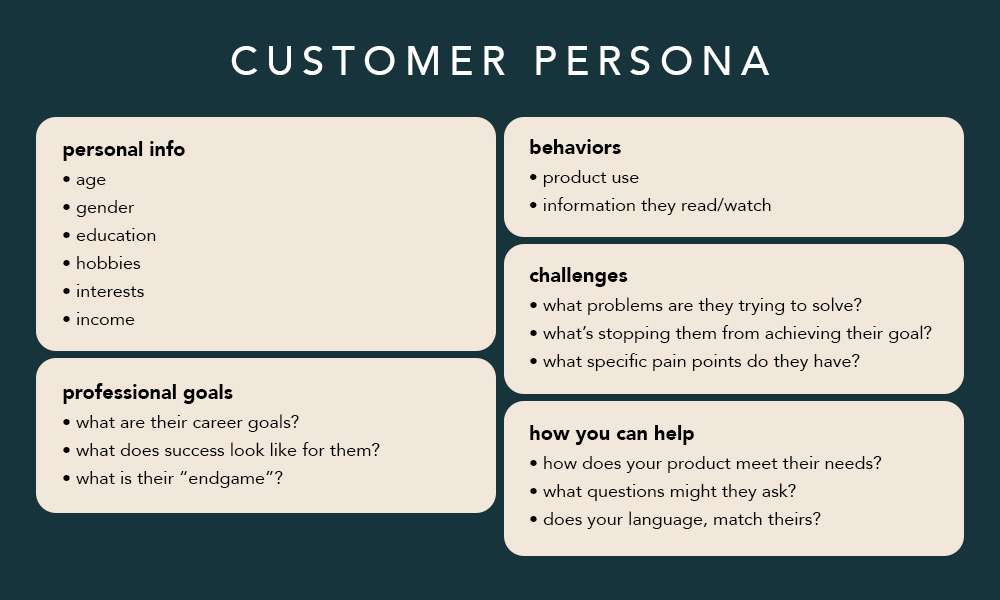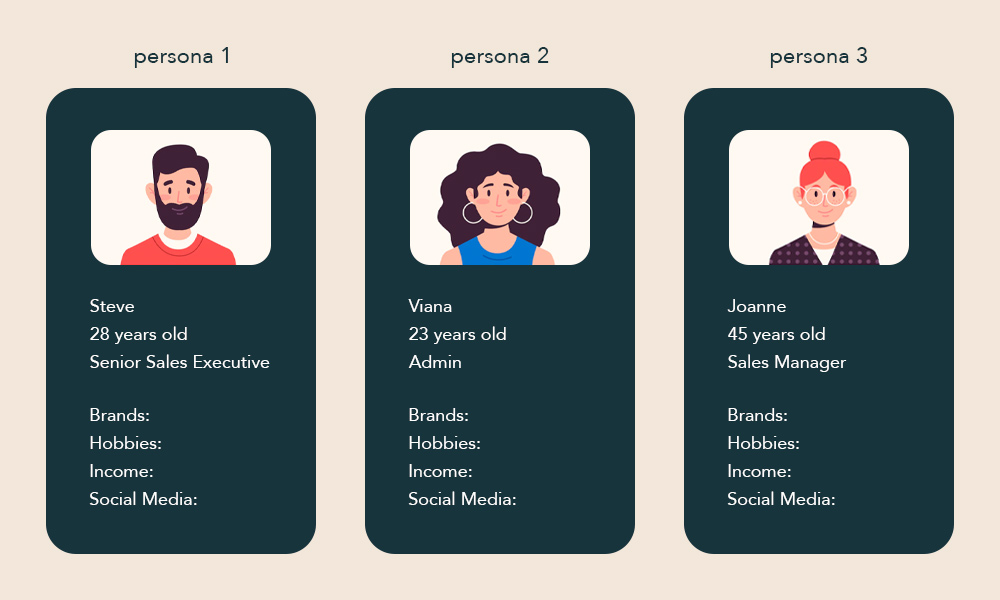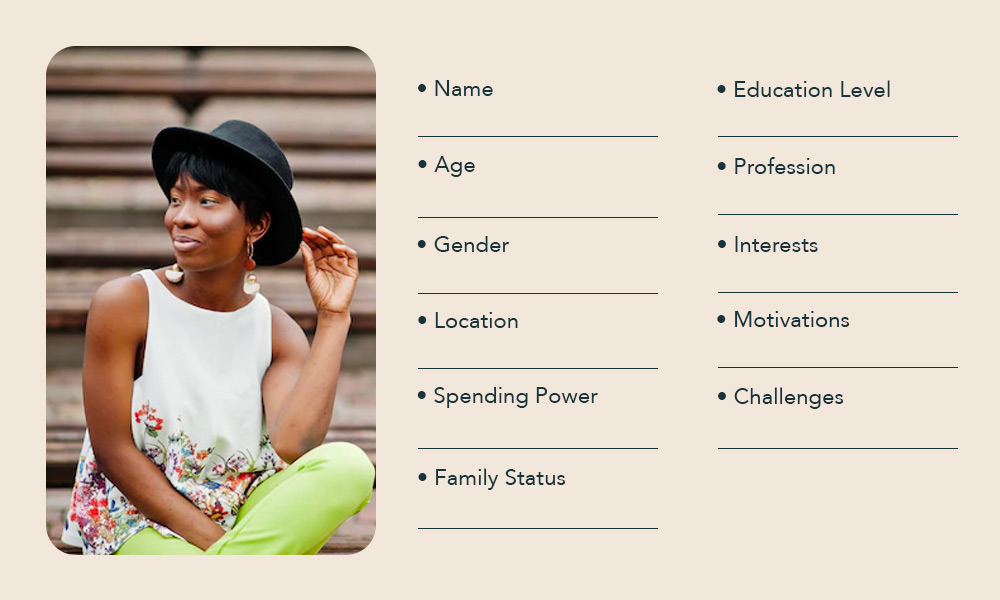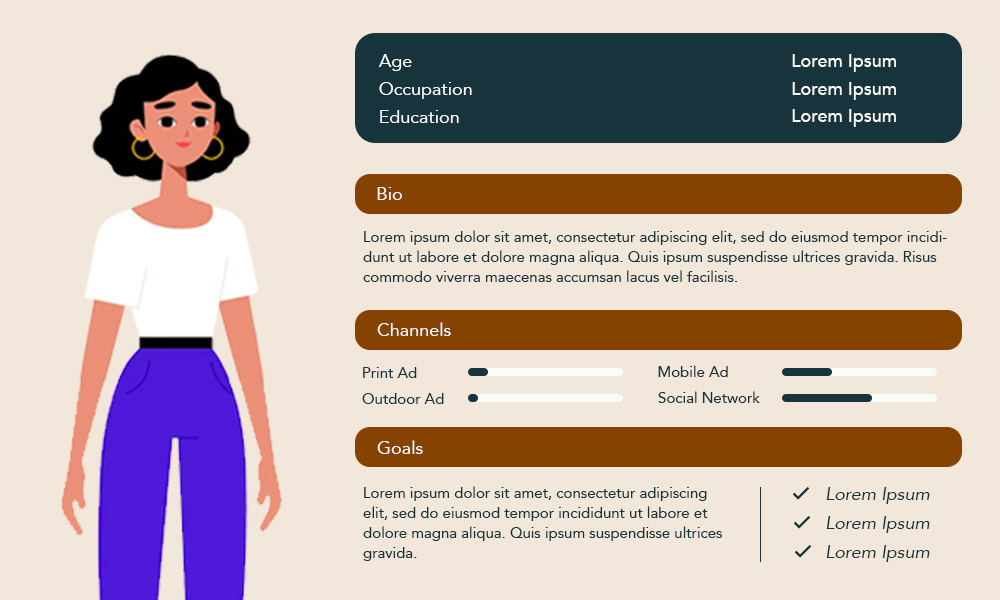Customer Persona: Your 100% Beginner's Guide!
A customer persona (or avatar) is a fictitious profile of a target consumer. Businesses usually have a few to cover most of their consumer base. Though these personas aren't real people, they're based on data and research, some of which will come from your actual customers, assuming you have any.
Customer personas assist organisations in understanding who they're attempting to sell to and how they'll utilise their product or service - they're treasured in marketing and product design departments. A detailed profile will include both demographic information (e.g., age, gender, income) and answers to more personal inquiries, such as what their passions, issues, challenges, and purchasing motivations are. It is entirely up to you how much detail you go into, but generally, the more you flesh things out - and we're talking about drawing out the persona and giving it a name - the more valuable the procedure will be.

Why Is It Important?
This is a clear step for a small firm that does not have to be expensive. Knowing who your customers are will benefit all team members, from sales and marketing to customer service and product development. With this shared understanding, you will be able to identify problems that need to be solved, make informed judgments about attracting and supporting customers, and make better decisions about content, product design, and communication tactics.
After all, customisation is essential. According to one 2018 survey, 91% of individuals are more likely to shop with firms that provide relevant offers and recommendations, while 80% are more likely to acquire a product or service from a brand that offers personalised experiences. Though they are most valuable when you are just starting, establishing personas may bring value at any time in your company's trajectory - and you should return to them as your consumer base evolves. Regularly reviewing personas can assist you in identifying new difficulties, desires, and potential product innovations. The greater your proximity to your customer, the more value you can provide.
Things To Keep In Mind!
No Clients? No Worries!
You can construct personas even if you don't have any clients yet. The personas' extent of detail is determined by the size of your company and its stage of development. However, even if you're just starting, this practice might help with misconceptions about your consumer base and product. Schedule a few conversations with the folks you want to reach. Remember that at this level, the discussion should be focused on understanding them rather than discussing or selling your concept. Iterate regularly as you learn more about your target demographic, and keep them involved - they could become your first customers.

Consumer Or Business?
When selling to businesses, personas differ. You'll focus on specific clients when creating a customer profile for a retail business. If you sell to a company, your customer persona will be more sophisticated. The decision-maker or buyer is not always the final user. It would help if you considered the boxes various persons are attempting to check to locate solutions to their commercial and professional pain problems. This guide focuses on business-to-consumer personas.
Utilisation!
Once you've created your personas, put them to use. While developing personalities is beneficial in and of itself, you should not stop there. You and your team should refer to them frequently and put yourself in your personas' shoes when making sales, marketing, product, and strategy decisions. Personas, for example, can be pretty valuable for customer education; by understanding your customers' purchasing experience, you can guarantee that you're meeting their individual informational needs at each stage.
Go Online!
There's a lot of information available online. Use internet resources such as templates, checklists, and specialist platforms to develop client personas. A decent persona template will include customer difficulties and frustrations, gains and desires, and what the client is ultimately seeking to do or get done, in addition to the typical demographic components.

How Should I Create Customer Personas?
What’s Your Focus?
Begin with a broad concept of who you’re trying to reach and what you need to know about them. Consider your company’s goals and ideals, current consumers, and those you believe your product would naturally serve or appeal to. You should be able to deduce an approximate breakdown of your customer base from this. For example, if you’re a pet wellness company, you could target urban millennials who own a dog.
Research!
Begin with what is easily accessible. This could entail engaging with customer-facing personnel, browsing social media followers and feeds (both your own and your competitors’), reading reviews and research studies, and searching through customer databases. Capture as much basic demographic information as possible while noting any repeating themes or attitudes you detect.
Add On Data!
One method is sending your consumers an email or social media poll. Overall, you should understand your target audience well, to the point that you can categorise them (who will eventually become your personas). Interviewing consumers that suit each group can be pretty beneficial. Our user research guide may help you discover these folks and what questions to ask them. Three to five interviews, each persona type, is a decent starting point.
Analysis
Spend some time refining the threads of resemblance you've discovered, settling on a few identities. It's ideal to start small, with two to five personas, to avoid spreading oneself too thin with early marketing efforts.
Name Faces
Create your identities with some colour and flair. Use a template to guide you, such as the one listed below. Begin by naming each persona and selecting an image or creating a picture of how you expect them to look. Then record other demographic information such as age, gender, location, spending power, marital or family status, education level, and career.

More Detail!
Consider your hobbies, attitudes, and activities. Motivations, difficulties, ambitions, how they behave at work, how they behave in their spare time, who they spend time with, what they're interested in, what irritates them, and so on are all broad categories. To back it up, you may offer soundbites from your interviews or insights from your data collection. Keep your queries open to acquiring as much detail as possible when seeking a deeper understanding of behaviours and reasons.
Open Access To All!
As previously said, you must use your personas to guide future decision-making. Make sure a digital version is available and accessible, and inform your team about it, explaining the goal of the exercise and how you'd like it to be used across departments. Invite any team members who were not part of the creation process to provide comments on the personalities.
Updates
As your business grows and attracts more consumers (hopefully), you'll need to revisit your buyer personas, adding new ones and upgrading old ones. This is especially true if you are expanding into a new market, releasing a new product, adjusting your pricing approach - or if there are significant societal changes. Make it a point to allocate accountability for your customer personas, whether it's to you, someone else, or a group of individuals. Keep your customer personas from sitting on a shared disc collecting dust.
Challenges To Look Out For?
Lack Of Comprehension
Personas are themes in qualitative data that are generalisations rather than precise science. As a result, researchers and stakeholders may need to be more knowledgeable about the validity of personas.
Before establishing the personas, ensure stakeholders understand how vital they are to the project.
Unrealistic Expectations
Stakeholders want comprehensive personas that encompass a large amount of data to make the most of their investment in personas. However, these lengthy personas need more usable data for specific design projects.

Personas with a targeted emphasis appear to be more effective because the data gathered can aid in specific workflow or feature development and directly impact design.
Understanding stakeholder goals, providing the correct tool for the job, and assisting them in understanding their scope of influence are all ways to get around the issue.
Uncertainty
User personas are only for some, and it can be challenging to grasp how they would be effective in the design process.
Remember, this is not a work of art. Personas should be mentioned in design talks and used practically.
Personas Created By Creatives
Designers frequently develop and impose personas. People may be dubious of the outcome since they need to know when or where it was made.
Do not build them and then distribute them to users. Stakeholders should be included in the process to understand how the character's many themes were developed.
Closing Words
It's time to start using your buyer personas now that you've built them. Please make use of them to direct all of your marketing activities. Consider what your persona would like to read when writing content. Also, when developing things, consider what would appeal to your persona. Using your buyer persona, you can always target the right folks with the correct message.
Creating buyer personas may appear to be a lot of work, but it is well worth the effort. You can generate content and products that appeal to your customers by taking the time to understand them. As a result, you'll be able to increase conversion rates and strengthen customer connections.

